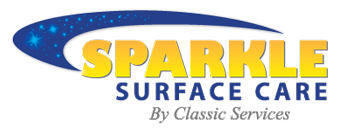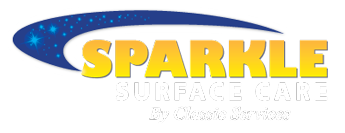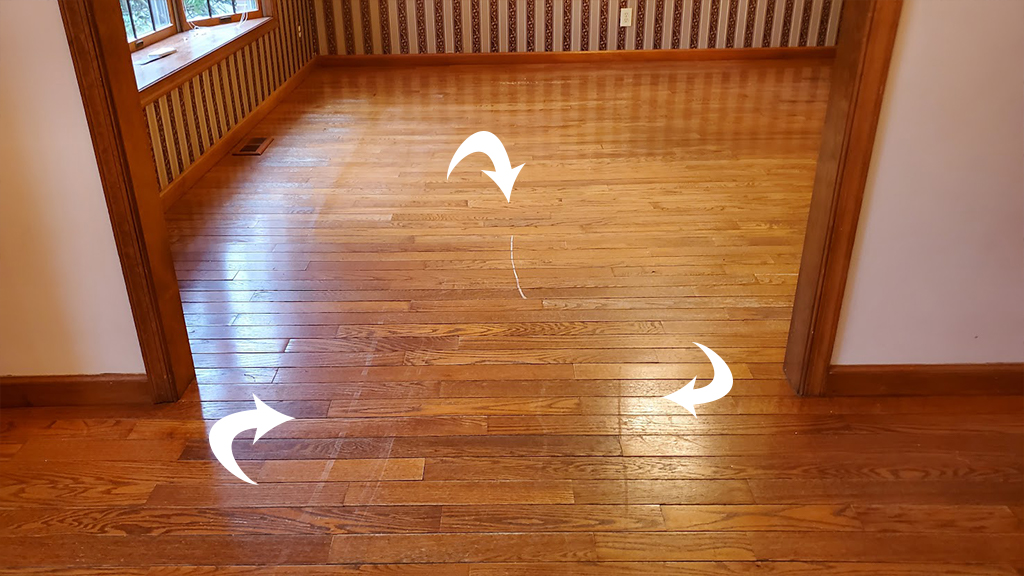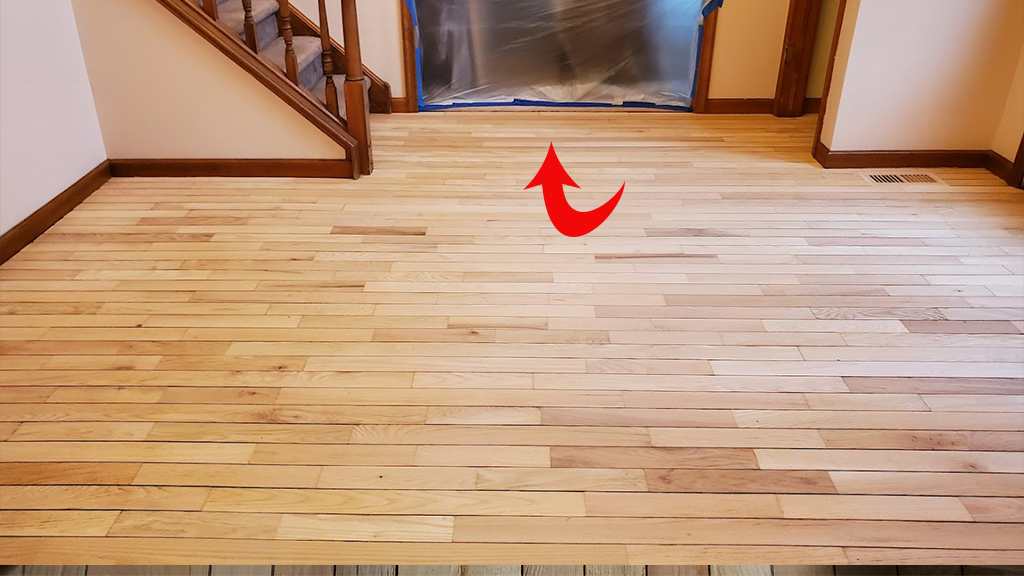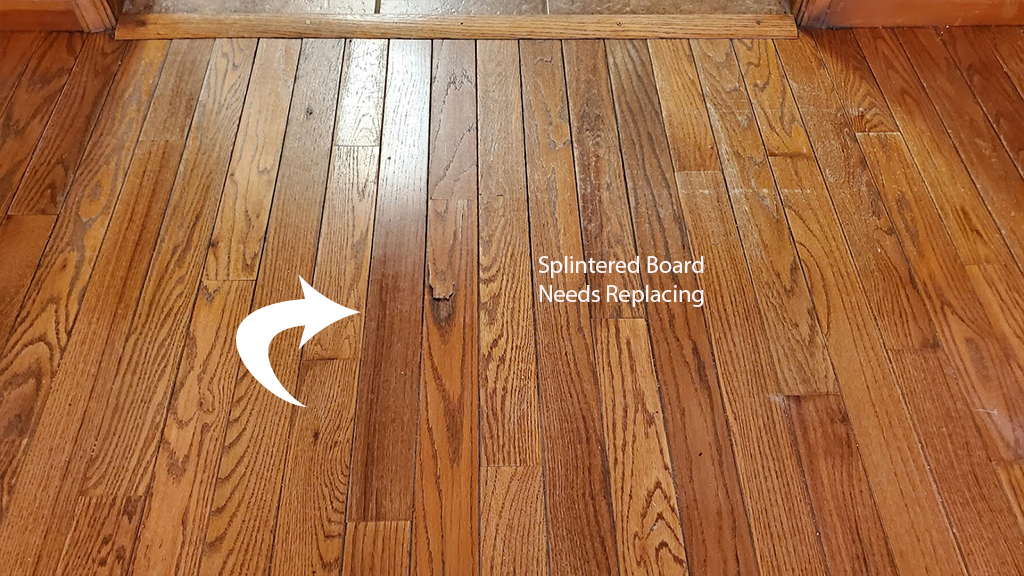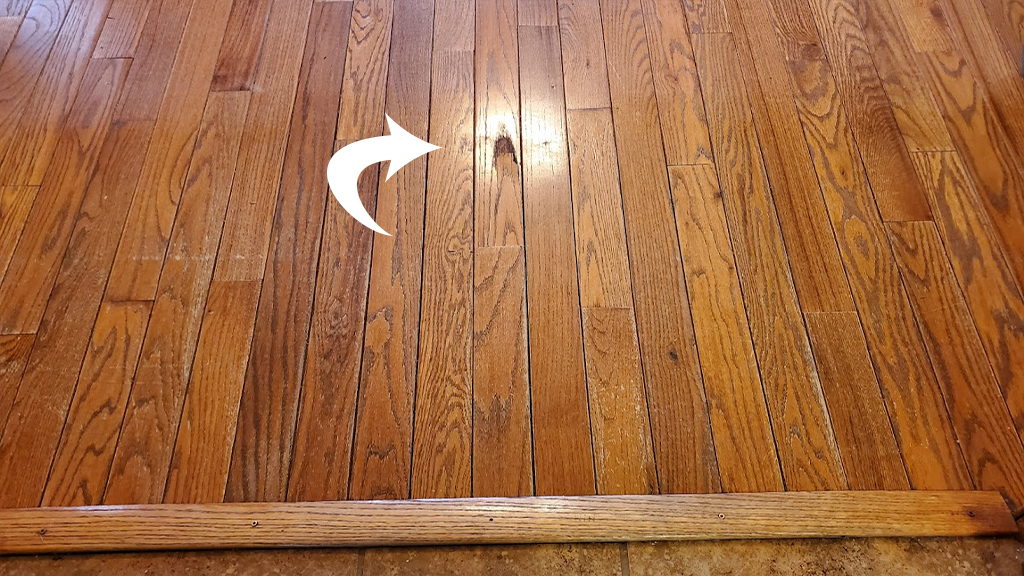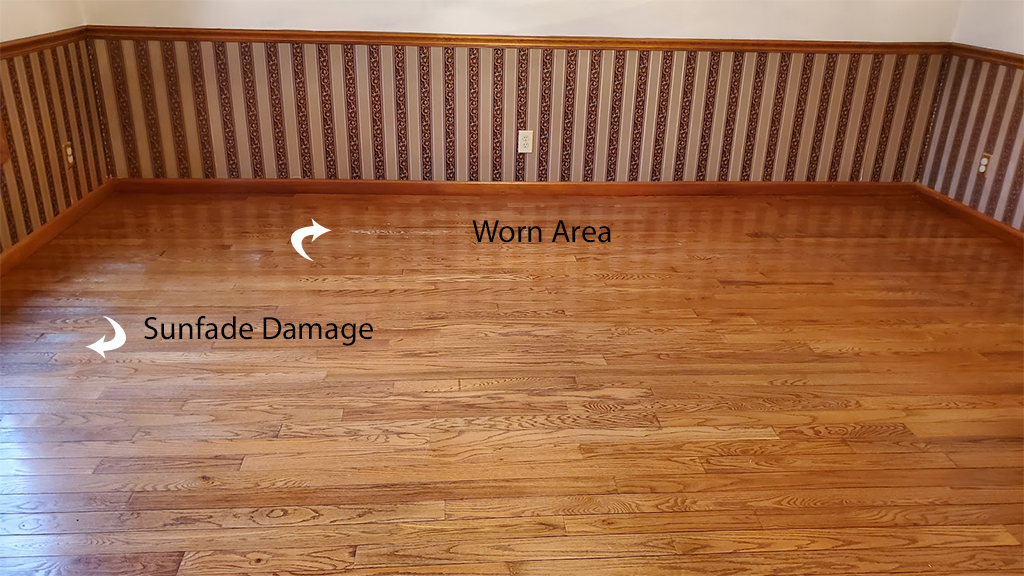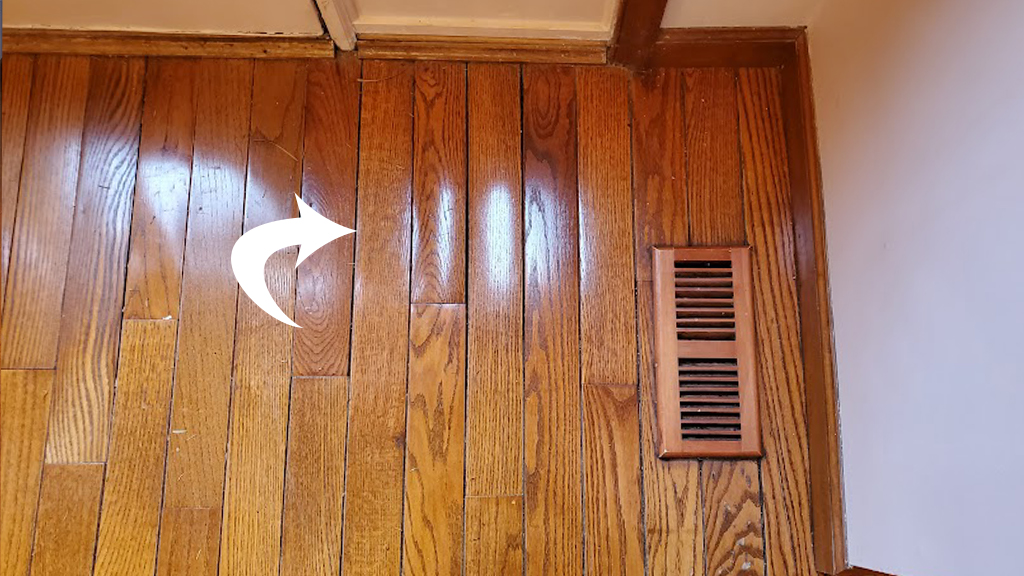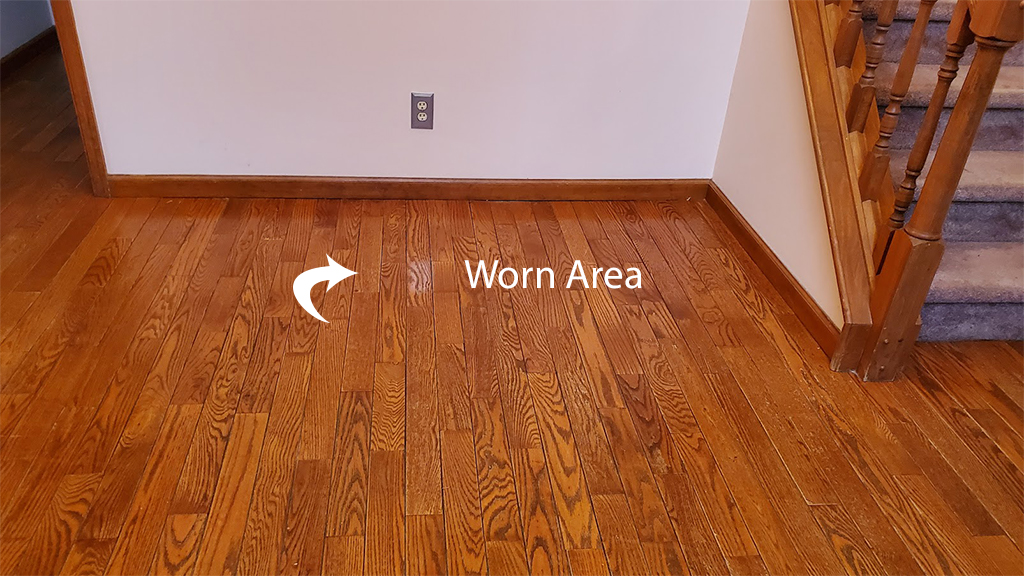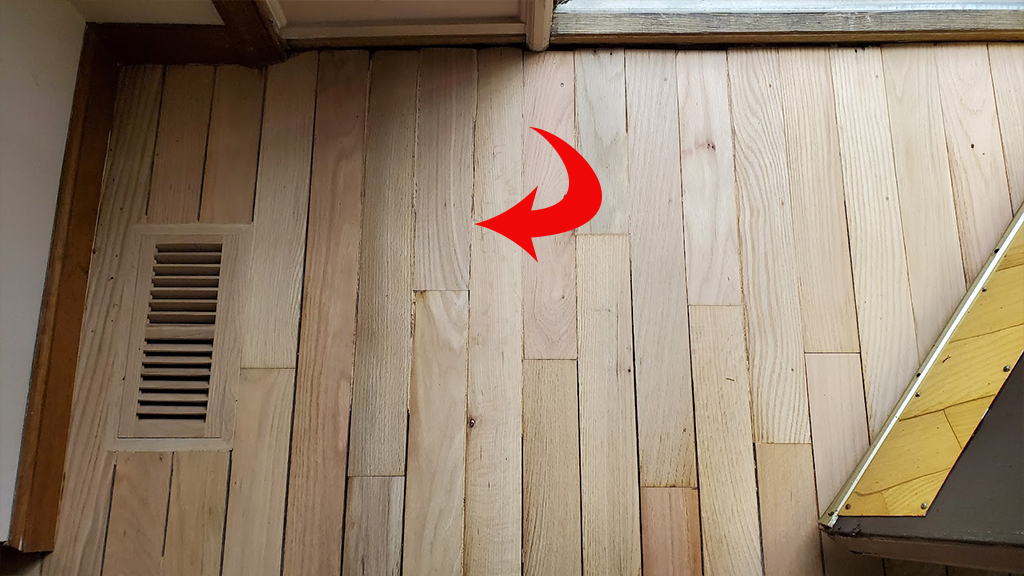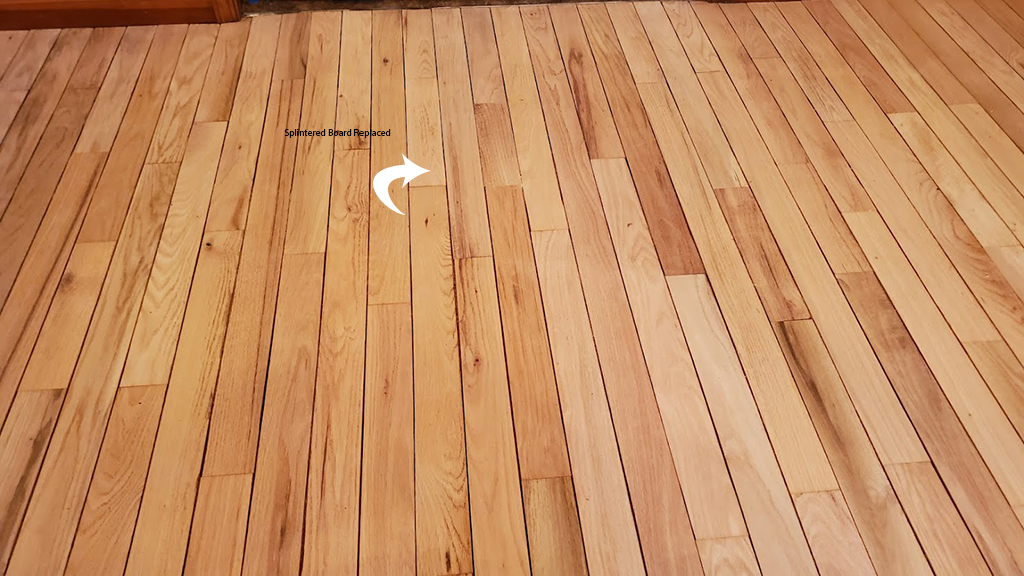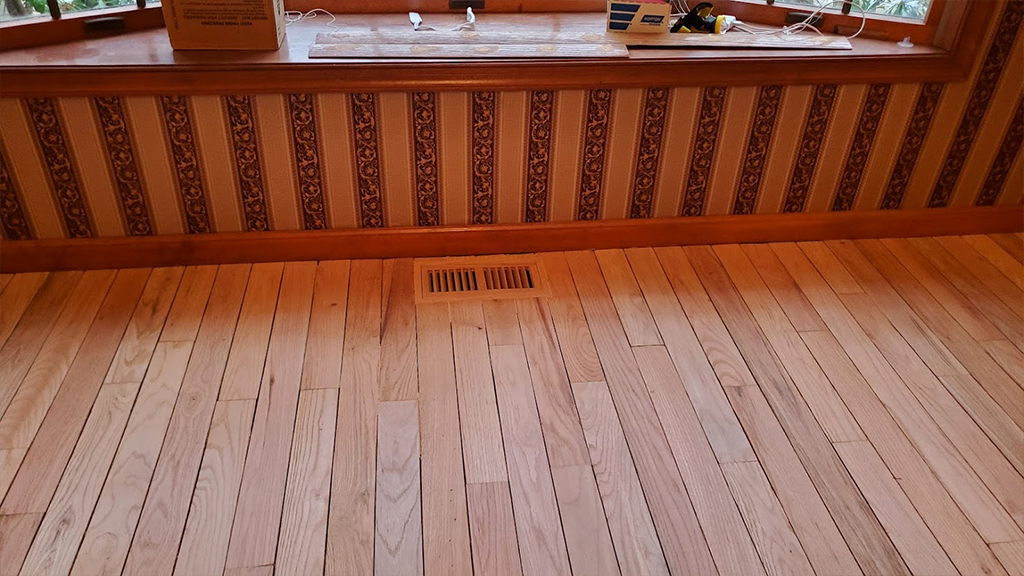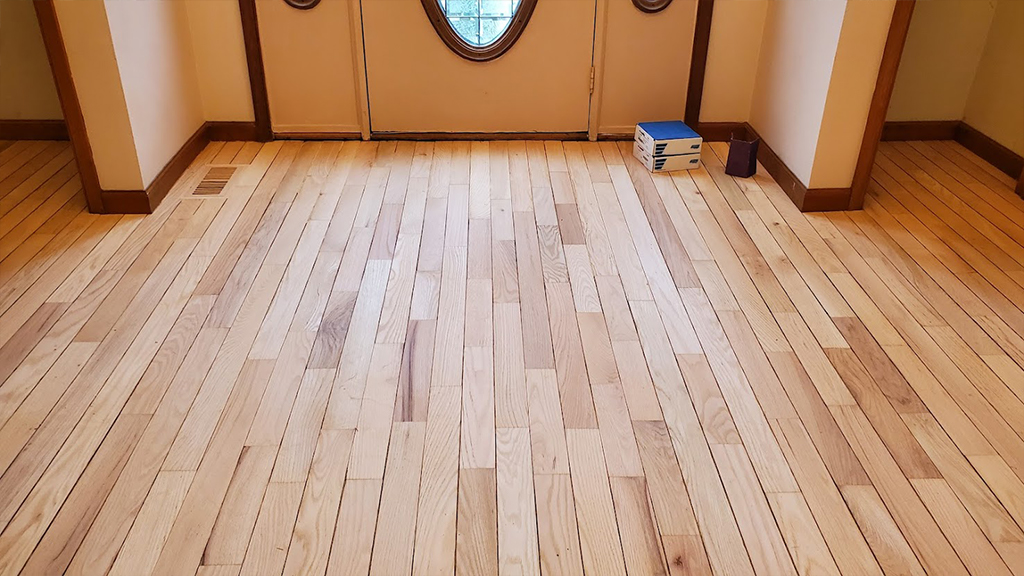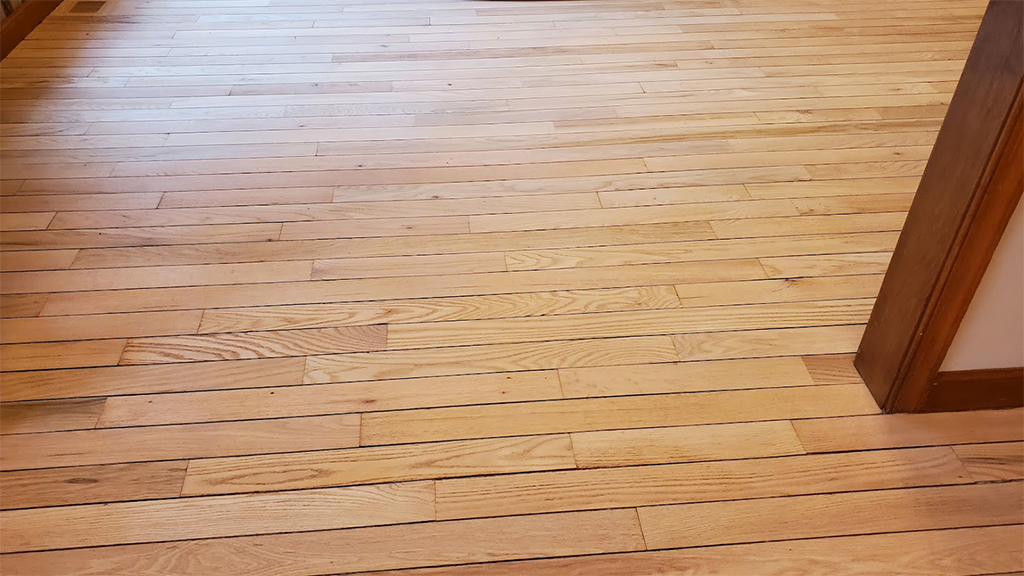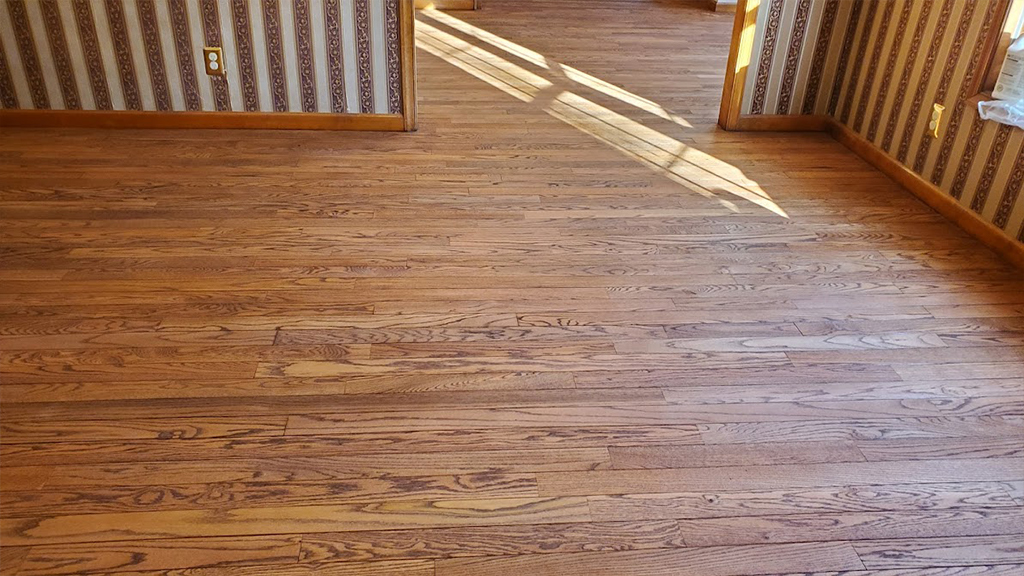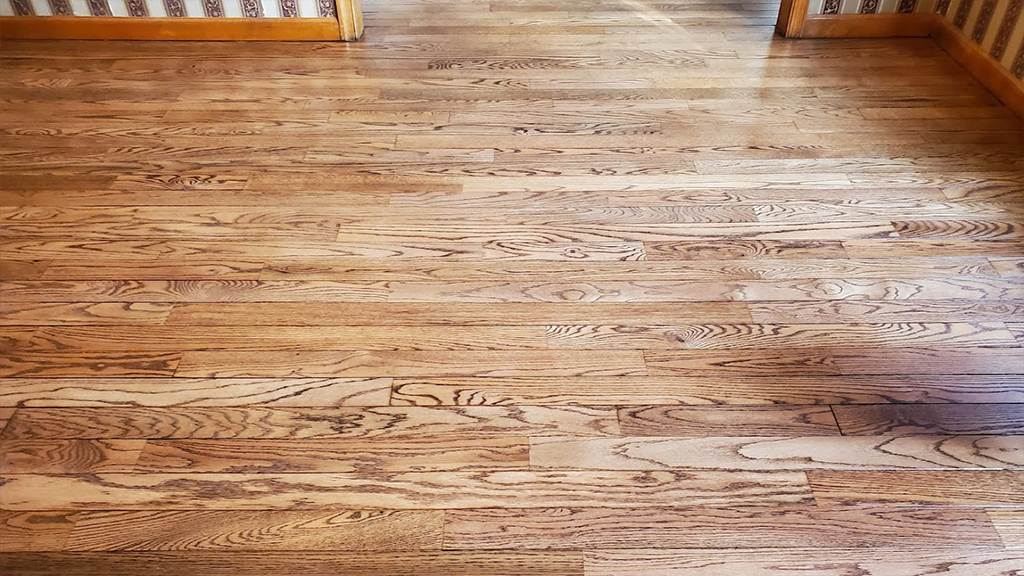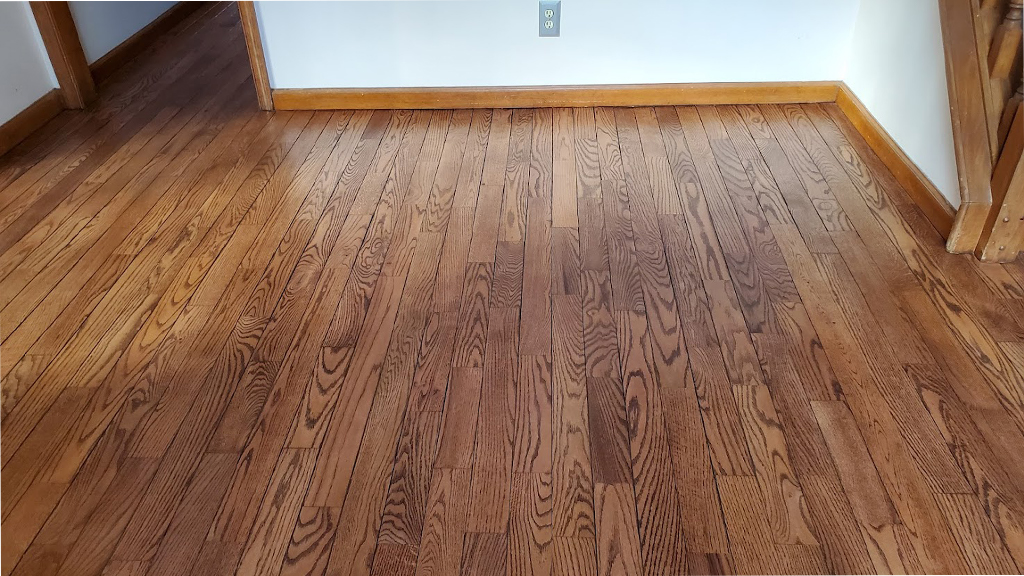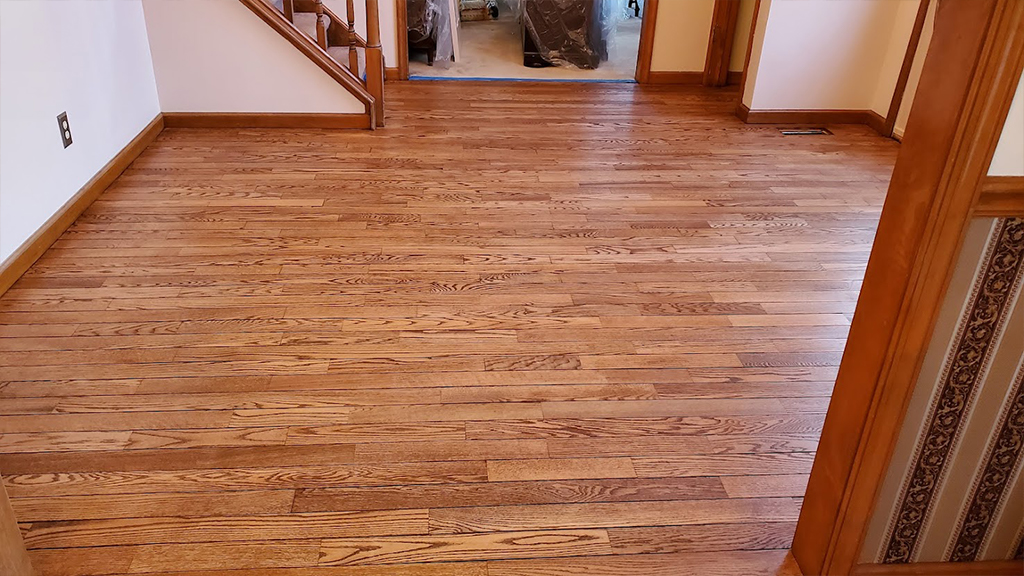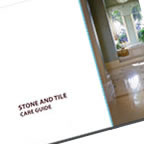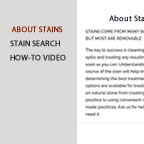“When Does The Dust Come?”
- Home Case Studies “When Does The Dust Come?”
On a recent job our client, Kathy Byrne, asked after we finished sanding her hardwood floors, “But when does the dust come?”
Our client had a “byrning” desire to refinish her hardwood floors but had hesitated knowing what a mess it would have created with all the sawdust.
This story is about a Medford client, who I refer to as my “outlaws” (their son is married to our daughter-in-law’s sister). A couple of years back we cleaned their tile and mentioned we refinish hardwood floors. Keeping that in mind Kathy piped up “that’s good to know!” So when it became a higher priority she reached out to us and scheduled an appointment.
Her main concern, having heard about a friend’s experience years ago, was how dusty her house would become if we refinished her floors for her. My standard answer, which I said a few times is, “our offending sanders are plumbed with vacuum filtration, so there is but a faint bit of dust to clean up. Indifferent to others who don’t use “dustless technology” (because there is a major investment in the equipment), there will only be a little dust. In fact, it is mostly invisible to the naked eye, but on sills, and lower areas of the walls you might feel it when rubbing your hand on things. (I am not sure she entirely believed me.)
We further explained that we isolate the work area as much as possible, by erecting plastic “zip walls” in doorways and openings, as well as the kitchen cabinetry areas if we are doing kitchen floors. Also, we utilize air scrubbers that are big HEPA filters, and block vent openings. Again, what I told her was making her feel better about venturing into the process. (But again, I am not sure she believed me).
Pleased with our thorough sales presentation and answering their questions, they decided to hire us.
While they did get another estimate they were impressed with how thorough our presentation was. Apparently our competitor barely spoke about what he intended to do, and how. They concluded we were much more professional in our sales presentation. I think they felt comforted that if we did what we were proposing to do the work would be done properly. Also they were reassured about being able to stay in their home with a minimal impact on their schedules and again about the dust.
At the start of the job they confessed to making new scratches when moving the furniture out.
Thankfully this happened before sanding, and we explained how that would be avoided when it came time to reset the furniture. For the record, heavy pieces of furniture will apply pressure, temperature and even friction at the contact points on wood floors. And while they had a sheet under the legs of the dining room table, the weight was too much, and the thin sheet had no ability to defend against the friction which caused the scratch. We further explained how to reset the furniture and protect the newly finished floors.
Kathy pointed to several plastic drop cloths she purchased and covered her furniture with.
We understood her precaution, but explained that placing the drop cloths on the furniture outside the plastic tenting was unnecessary.
We reminded her that we would erect a plastic zip wall at the opening of the living room. And after questioning about the foyer and upstairs (with a cathedral ceiling), we mentioned the dust, as little as there was would be mostly at mid wall height up to about a person’s waist. We explained that there was no need to put more plastic up because the dust wouldn’t really stir up to the second floor (not with our dustless technology).
I think she still had doubts, again referring to her friend. And frankly, years ago that is what happened, and still happens when floor refinishers don’t invest in the technology that prevents it. I shared that we have an upcoming client who had their floors sanded and finished in place, and there was dust everywhere, down low, on the walls, on the trim, fixtures, high ledges in the cathedral area too. This client has other work that we do but asked for a cleaning team as well, and I quoted for all the dust it could be above $1000.00 to remove (lots of high wall and ceiling work).
And why did this happen? The guy got a low ball price that did not include dustless technology, and he got what he paid for. So what they saved for preventative technology they ended up having to either spend for a cleaning service, or do it themselves. When he called me back he informed me that he and his wife 7 mos. pregnant would do it themselves, even though it meant getting up on a 12-15 foot ladder to clean up the obvious dust on the ledges in the cathedral areas.
As we got settled into the job our our technician found a couple of things needing repair.
One was a spear-like shard “splinter ripe” to become a major splinter right in the entry from the kitchen to the dining room. Too big to try and glue, it was kind of dangerous if left unattended, and the best option was to replace it. Secondly, oddly enough, the foyer had some moisture damage (that the clients never recalled being a problem). The boards had a ’rounded” unflat appearance, textbook of a water issue, and needed to be sanded flat or replaced. Sanding them would be sufficient. However, one “trampolined” up and down near the front door. At first thinking it needed securing. But, actually it had to be replaced as the under-side of the board had decomposed, perhaps by termites. However, oddly it was just one board. So the jury’s still out on that one (why only one board?), but it would replaced before the sanding began.
And when offered, they elected to have the flush mount vents installed (an upgrade).
These went in quickly. Flush mount vents (recessed flat into the floor), are surely a desired upgrade when offered with refinishing. Besides a better “look”, the vents do not impede vacuuming, dusting or mopping, and certainly withstand foot traffic better than the vulnerable alternative. Drop in vents sit loosely on top, and move while subjected to the actions of foot traffic and floor care efforts, and often become damaged by the aforementioned exposures. Flush mount vents look better and perform better, all the way around.
Some angst over the stain choice, both clients ultimately agreed on a color stain.
And next was process in deciding the stain color. Wanting to go darker, but not too dark that wouldn’t blend with all the window trim, baseboards, rails, door trim. After 3+ samples, the last one was a dead ringer. It offered a tad bit more color, with less “orange,” and paired nicely with all the stained trim. Perfect, Kathy was happy and Patrick knew his place. If she was happy, then he was happy!
Kathy took an interest in the process and asked good questions which we were happy to answer.
Some folks aren’t even around when we do our work, while others take an interest in our work. As we explained what, when and how, Kathy just looked at me and remarked about our technician, “Marvin thinks of everything!” Yes he does. He prides himself in fixing all the little things he finds, and especially likes to clean up life’s mishaps, and others’ shoddy work. And that’s exactly what he did along the way. By now Kathy was impressed with his attention to detail. So far we delivered on every promise we made to them.
As Marvin began sanding Kathy was bracing for “the dust.”
For the next day and a half, sanding all areas of the floor according to a detailed schedule, all of the floors were sanded about 7-8 times with different grits of sandpaper across the entire floor. As for the dustless technology, it captured the dust in vacuums until they were full. Then he removed the sawdust to a contractor bag outside. After each task or a couple times during the day he vacuumed with our backpack vacuum, using a felt wand and a brush for the woodwork.
At this point Marvin started to deconstruct the plastic zip walls. He transitioned from the sanding, to preparation for the staining. After close inspection, he began to “water pop.” By applying a sheen of water on the sanded floor, it opened the grain and allowed for any imperfections in the sanding to be visible, so they could be fixed before the stain went down.
It was about at this point Kathy finally asked so when does it get dusty?
We informed her that he was mostly done with the heavy sanding. And to answer her question- it doesn’t!
Now there was only touch up sanding. We think she was very surprised and now understood the benefits of dustless technology. (Not to put words in her mouth, but it is my suspicion that she was talking to her friend, and compared notes about each of their experiences, but much to our client’s delight the dust was very subtle).
Now as discussed, we mutually coordinated with our client’s schedule about when each coating went down.
With the bulk of the work over we coordinated our tasks with the Byrnes’ so they could be off the floors at a convenient time. And they found this phase of the job to be quite workable. Many times I hear clients ask how long do they have to vacate the house. And I say not necessarily at all, depending. And for these folks, Patrick could work from home in different rooms as the need would arise. And Kathy, well she had babysitting and shopping to do. She preferred to be out of the house during the use of the loud sanders.
Again, not to put words in their mouths, I believe, although a big intrusion into their daily schedule, they found it workable. The stain went down at the coordinated time, as did the seal and finish coats. Kathy fell in love with the satin finish sheen, and fell in love with her floors once again. Using satin, instead of semi-gloss gave it has given it a subtle sheen that is rich looking, and much more contemporary as compared to the semi-gloss she started with. If I could say she’s in love with the results I am not over embellishing! This refinishing process was worth every penny for her!
Just left were the last details including the front door trim, and other trim to be put back.
In the end Kathy was pleased with the workmanship and thrilled her house was not a “dust bowl.”
Clearly pleased about it being dustless, I even think I heard Kathy say that she really hadn’t needed to cover all her furniture up to begin with because there was minimal, and we meant minimal dust. If I could guess, I think they were both pleasantly surprised!
Coming to a close, the last of the details was to instruct them how to protect the floors while resetting the furniture. Dragging the table and sideboard (as was done moving it out), was not an option. We informed them they needed a protective barrier on the floor to use a dolly to move the heavy table back into the dining room. We also advised them they should not drag heavy stuff across the newly refinished floor. As much as possible, the furniture should be lifted and placed, with protectors under all contact points, on the floor. And finally we lined her up with the proper cleaning agents.
In the end we have one happy camper, Kathy, in love with her floors. She is over the moon thrilled and excited to get to a few little decor′ change “upgrades” to freshen the look. Self admitted, she is, and will be sharing her experience with others as she has now become a very happy “championing client” and overly eager to refer everyone she knows to us for refinishing (and installing), hardwood floors!
PS – It was confirmed these folks were happy, as per feedback from my daughter-in-law’s mother, who talked with Kathy. Cathy Johnson indeed shared that Kathy is in love with her floors and will refer us any time she has the opportunity!
If you want your hardwood sanded and want to make sure dustless technology is used give us a call. Call 609.953.0472 or Contact Us on line and we will reach out to you!

